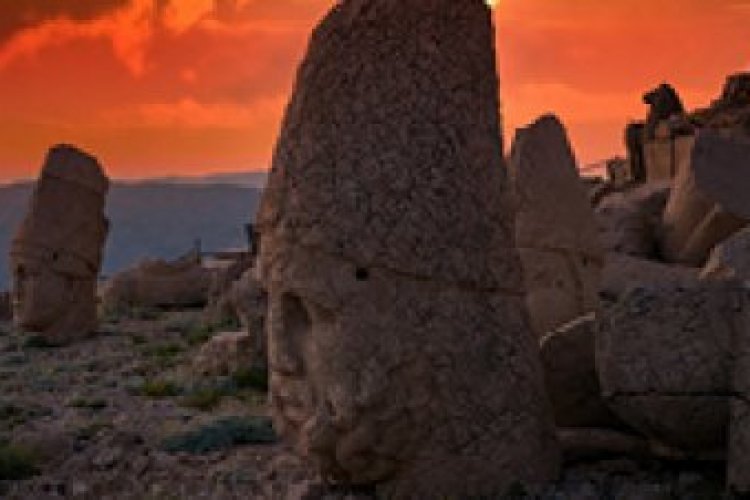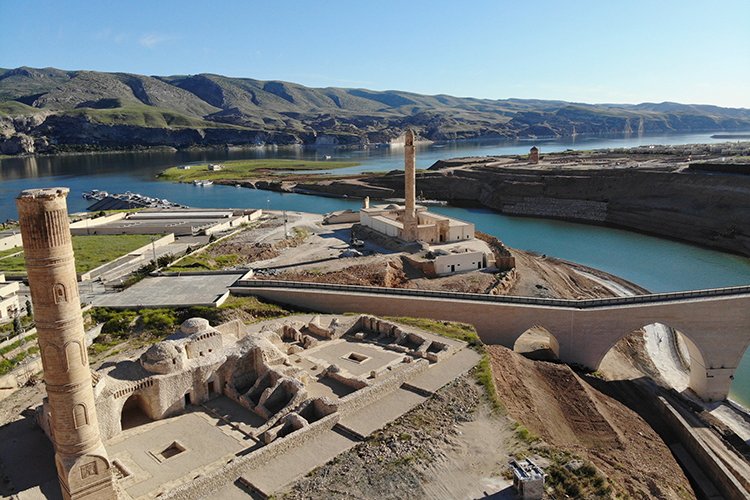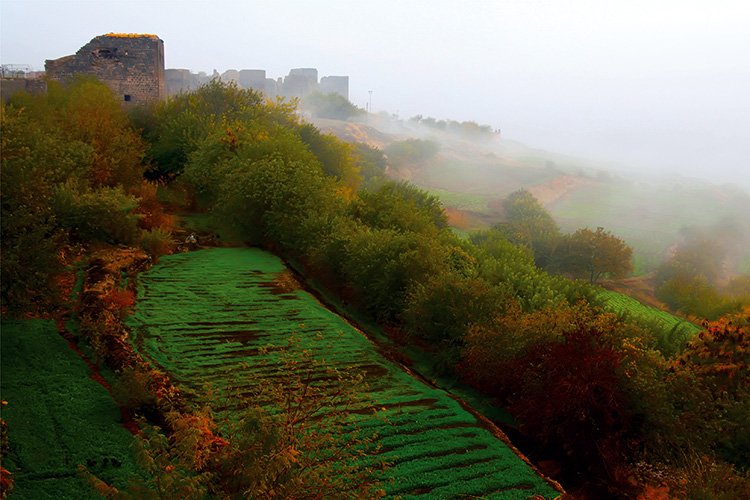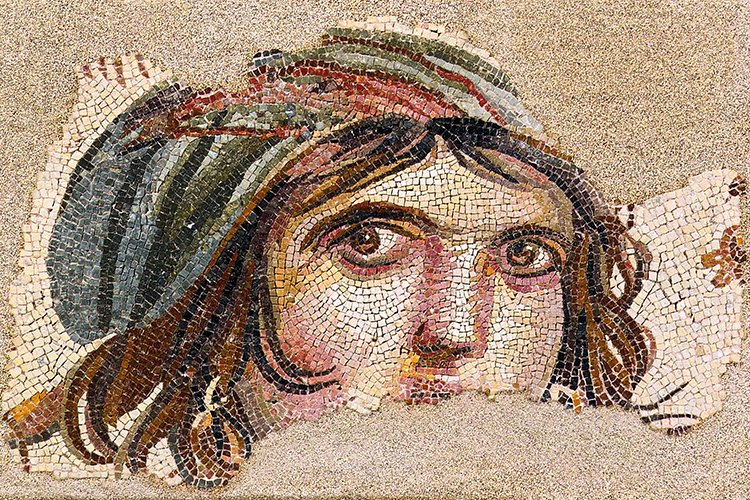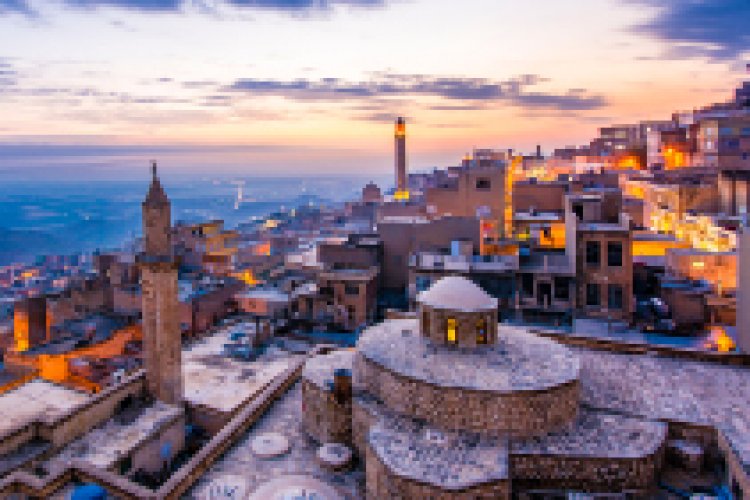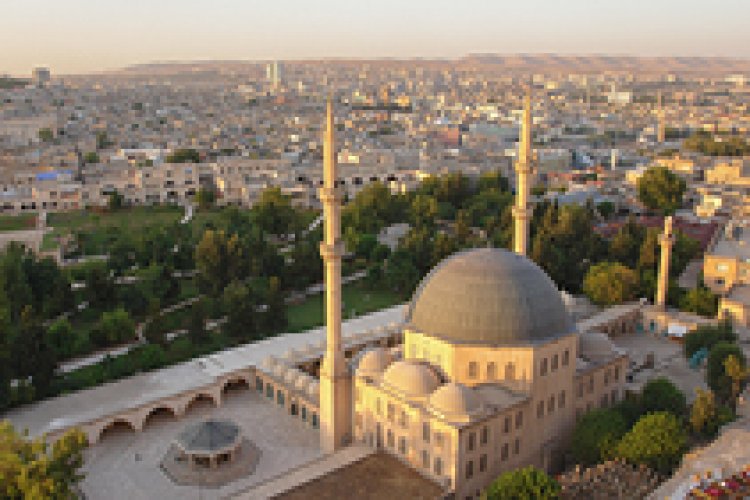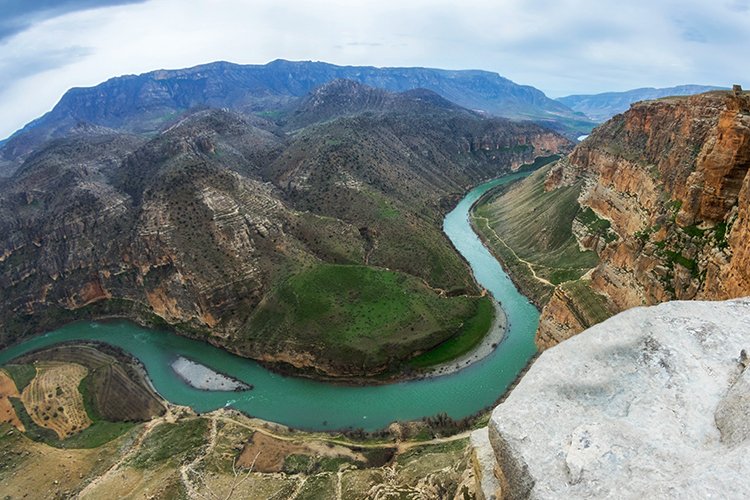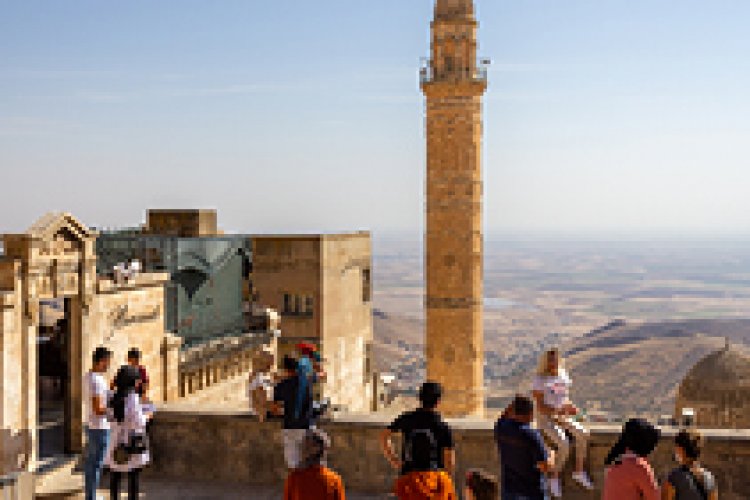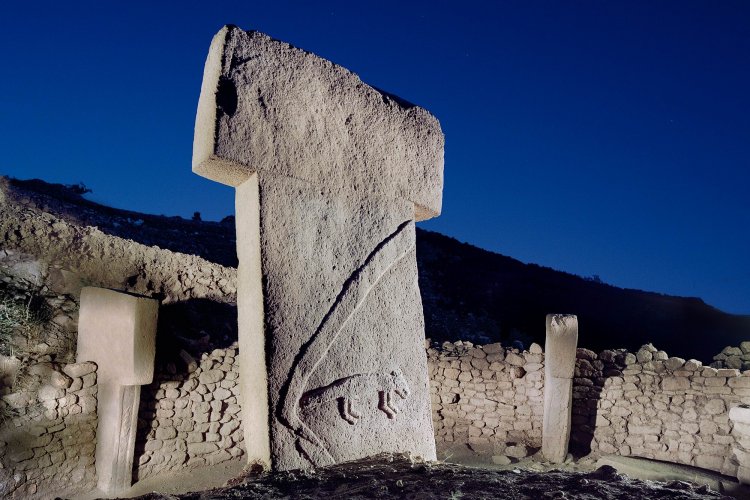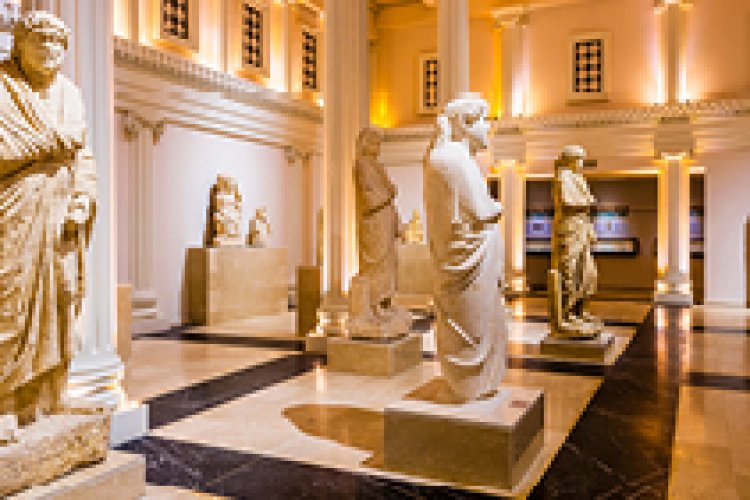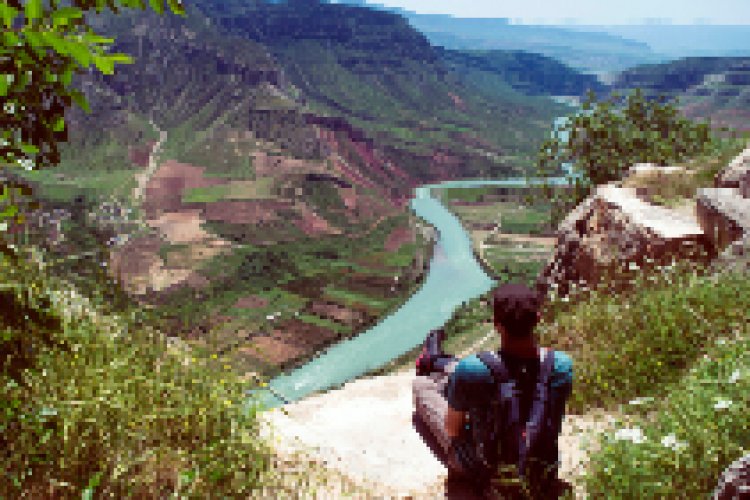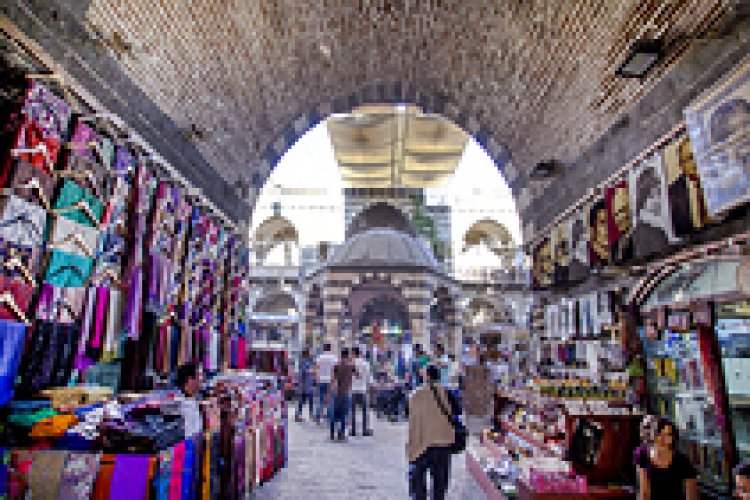Routes
Adiyaman 2-Day Trip Route
In addition to the Adiyaman 1-day route, all the attractions in the Mount Nemrut National Park are visited on this route. Perre Ancient City, 5 km from Adiyaman city center, is actually a necropolis area of gigantic size. There are walking paths in the city and information at the entrance. There is a fee for visiting the city. There is a Roman Fountain, which is still in use today, in the Orenli Village, about 1 km ahead of the Perre Ancient City. It is recommended to stop at this fountain and have a photo taken and wash your face with freezing cold water. Mount Nemrut National Park is within the borders of Kahta county. On the way to Kahta, if desired, you can turn to the direction of Samsat and one of the companions of Muhammad, His Holiness Safvan B. Muattal’s Delubrum can be visited. The last center where you can eat and shop before entering the national park is the town center of Kahta. Eating and drinking opportunities in the national park are limited. Here, you can go to the edge of Ataturk Dam Lake and eat trout or lake fish shabout. The first destination in the national park is the Tumulus of Karakus. Mithradates II, his son who succeeded King Antiochos Theos, built this mausoleum for his mother Isias. At this mausoleum which was built for his mother Isias, who he called the most beautiful woman in the world, his sisters Laodike and Antiochos, who were married to the Persian princes are buried next to their mothers, upon being killed in the Persian-Roman war. Four Commagene queens are buried in the Karakus mausoleum. The next stop is the Cendere (Septimus Severus) Bridge. The bridge, which was formerly known as Chabinas and now over the Cendere water, was built by Septimius Severus for the 16th Roman Legion, which established its headquarters in Samsat at the end of the 1st century AC. Septimius Severus had this magnificent bridge built in the honor of his family. The column on the right in the south was built in honor of himself, the column opposite was built in honor of Jullia Domna, who is known as his wife and mother of the soldiers, the column in the north, which is still standing, was built in honor of his eldest son Caracalla, and the column opposite him, which was destroyed by Caracalla, was built in honor of his younger son Geta. This column was abolished when Caracalla eliminated his brother Geta as a result of the throne fight. Another visiting center is Old Kahta, known as the New Castle. Old Kahta Castle has the traces of three important civilizations. During the Commagene period, it was built as an important administrative center and castle together with Arsameia, which was the summer capital, and its position was maintained by being developed during the Romans period. After the Mamluks dominated the region in the 1260s, the castle was restored and given its current shape. Until the Republican period of Old Kahta, it remained attached to Elazig (Memuret-ul Aziz) as the county center, and the castle was used until 1926. The castle, which is covered with waterways, cisterns, dungeons, shops, places of worship and large rooms, is being restored. Just below the castle, there is a bridge from the Mamluk period. Right next to Old Kahta is the Ancient City of Arsemeia (Old Castle). This is the National Park entrance and there is an entrance fee. Please keep your ticket with you for the Nemrut top. This is the summer capital of the Commagene Civilization. The most striking elements in the city are a cave entrance with one of the longest ancient Greek inscriptions in Anatolia, and a relief depicting the handshake of Heracles and Apollo, which has been preserved in good condition. The reverse side of each relief in the city is filled with Greek inscriptions. When you reach the top, there is an extraordinary bird's eye view from the Old Castle (Arsemeia) to the New Castle (Old Kahta). Again, the water of Cendere looks magnificent from here. From here, there are two ways to the top of Mount Nemrut. One is the newly opened short road that leads directly to the top from Arsemeia and does not stop at any settlements, and the other is the old but longer road passing through the village of Karadut, where there are food-beverage-accommodation-resting opportunities. Both can be preferred. The most magnificent and final point of this route is, of course, the top of Mount Nemrut, known as the throne of the gods. You should come here at a time to watch the sunrise or sunset, because one of the most beautiful sunrises and sunsets in the world is experienced here. Since the altitude is very high (2150 m), it is recommended to take coats, cardigans and blankets with you, even in summer. In the 1st century BC, the King of Commagene, Antiochos I, had a magnificent mausoleum built for himself, a tumulus made of crushed stones over the burial chamber, and sacred areas surrounding the three sides of the tumulus. The tumulus is surrounded by 3 terraces for the ceremonies organized in honor of King Antiochos I. Of these areas, which are called east, west and north terraces, on the east and west terraces; there are magnificent sculptures, reliefs and inscriptions of 8-10 meters in height, which were created by placing 8 chipped stones in rows on top of each other. The sculptures begin with a statue of a lion and an eagle and end in the same order. The lion, the king of animals, symbolizes power on earth, and the eagle, the messenger of the gods, symbolizes celestial power. The statues are arranged on both sides as follows: King Antiochus I (Theos); Fortuna (Theichye-Commagene-Goddess); Zeus (Oromasdes); Apollo (Mithras-Helios-Hermes); Heracles (Ares-Artagnes). Antiochos, who states that his mother side hails from Alexander the Great (Greek-Macedonia) and the father side hails from Darius (Persia) in cult inscriptions, combined this ethnic difference from his ancestors and turned the god statues to the east and west as an indicator of transforming them into cultural wealth. The names of the god statues are already expressed in both Greek and Persian languages. Although this route ends here, if you wish, you can continue to Gerger and visit Gerger Castle and one of the most beautiful views of the Euphrates river in Gerger.
Duration: 1 Day
Destinations:
-Adiyaman Center
-Old Besni
-Sofraz (Ucgoz) Tumulus
-Kizilin Village - Euphrates View
-Goksu Bridge
-Perre Ancient City
-Roman Fountain - Orenli Village
-St. Safvan Bin Muattal Delubrum
-Karakus Tumulus
-Cendere (Septimus Severus) Bridge
-Old Kahta
-Arsemeia Ancient City
-Mount Nemrut Tumulus
What to eat and drink?
-Vegan Steak Tartar Balls at Adiyaman
-Lamb Steak at Sambayat - Biscuit with Adiyaman cheese at Besni
-Besni grape, either fresh or dry, depending on the season
-Adiyaman pomegranate in season
-Trout or lake fish shabout nearby Ataturk Dam Lake at Kahta
-Turkish pancake at Karadut Village
What to buy?
-Besni grape (dry)
-Traditional handcrafted Adiyaman rugs
-Totally local Adiyaman tobacco
-Adiyaman cheese (salted/saltless)
-Nemrut figurines as souvenirs
Must Do
-Visit Adiyaman Museum, see the "Golden Apple Award" granted to Mount Nemrut -Shop at Oturakci Bazaar and Sire Inn
-Eat lamb steak at Sambayat
-Walk the Old Besni route and take photos
-Take a boat tour on the Euphrates
-Wash your face at Roman Fountain at Perre Orenli Village
-Eat fish nearby the dam lake at Kahta
-Walk across the Cendere Bridge
-See one of the longest Ancient Greek epigraphies of Anatolia and handshake scene of Heracles and Apollo at Arsemeia (Old Castle) Ancient City.
-Enjoy Old Kahta (New Castle) view from the top of the Arsemeia (Old Castle) Ancient City
-Enjoy sunrise or sunset at the throne of the gods at the peak of Mount Nemrut, eighth wonder of the world.
